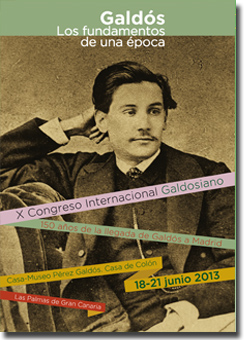LAS BASES CIENTÍFICAS DEL SABER MÉDICO DE GALDÓS / THE SCIENTIFIC BASES OF THE MEDICINE KNOWLEDGE OF GALDÓS
Palabras clave:
Literatura, Ciencia, Medicina, Sociedad, Sanidad, Literature, Science, Medicine, Society, HealthResumen
En el contexto de la indagación sobre la relación de Galdós con la ciencia de su tiempo y, en este caso concreto, con la ciencia médica, este trabajo plantea como primer interrogante el del cómo de los conocimientos amplios que Galdós demostró tener sobre temas médicos en novelas como Lo prohibido, Fortunata y Jacinta o La de Bringas, por ejemplo: su amistad con médicos muy interesantes es una posible respuesta, pero también su saber ‘estar al día’ con la mentalidad de los pensadores sociales de su época respecto a la importancia social (y no solo médica) de enfermedades tan extendidas y graves como la tuberculosis, el alcoholismo, la locura o la sífilis. Un análisis pormenorizado sobre el perfil de Maximiliano Rubín, en Fortunata y Jacinta, es válido para concluir que Galdós, previamente, se había preparado extensamente sobre la sífilis congénita; y que con un retrato tan completo y concreto no sólo respondió a una intención naturalista inicial, sino que ponía ante los lectores un espejo didáctico intencionado pintado de de macabrismo y tristeza.
In the context of the investigation in the relationship of Galdós with the science of his time and, in this specific case, with the medical science, this work poses as first question of the how of the broad knowledge that Galdós demonstrated have in medical subjects in novels such as Lo prohibido, Fortunata y Jacinta or La de Bringas, for example: his friendship with very interesting doctors is a possible answer, but also his knowledge to ‘keep up’ with the mentality of social thinkers of his time regarding to the social importance (and not only medical) of disease so widespread and serious as tuberculosis, alcoholism, madness or syphilis. An detailed analysis of the profile of Maximiliano Rubín, in Fortunata y Jacinta, is valid to conclude that Galdós had previously prepared extensively on congenital syphilis; and that with a portrait so full and concrete not only responded to an initial naturalistic intention, but it put a painted intentional teaching mirror to readers of macabrism and sorrow.




